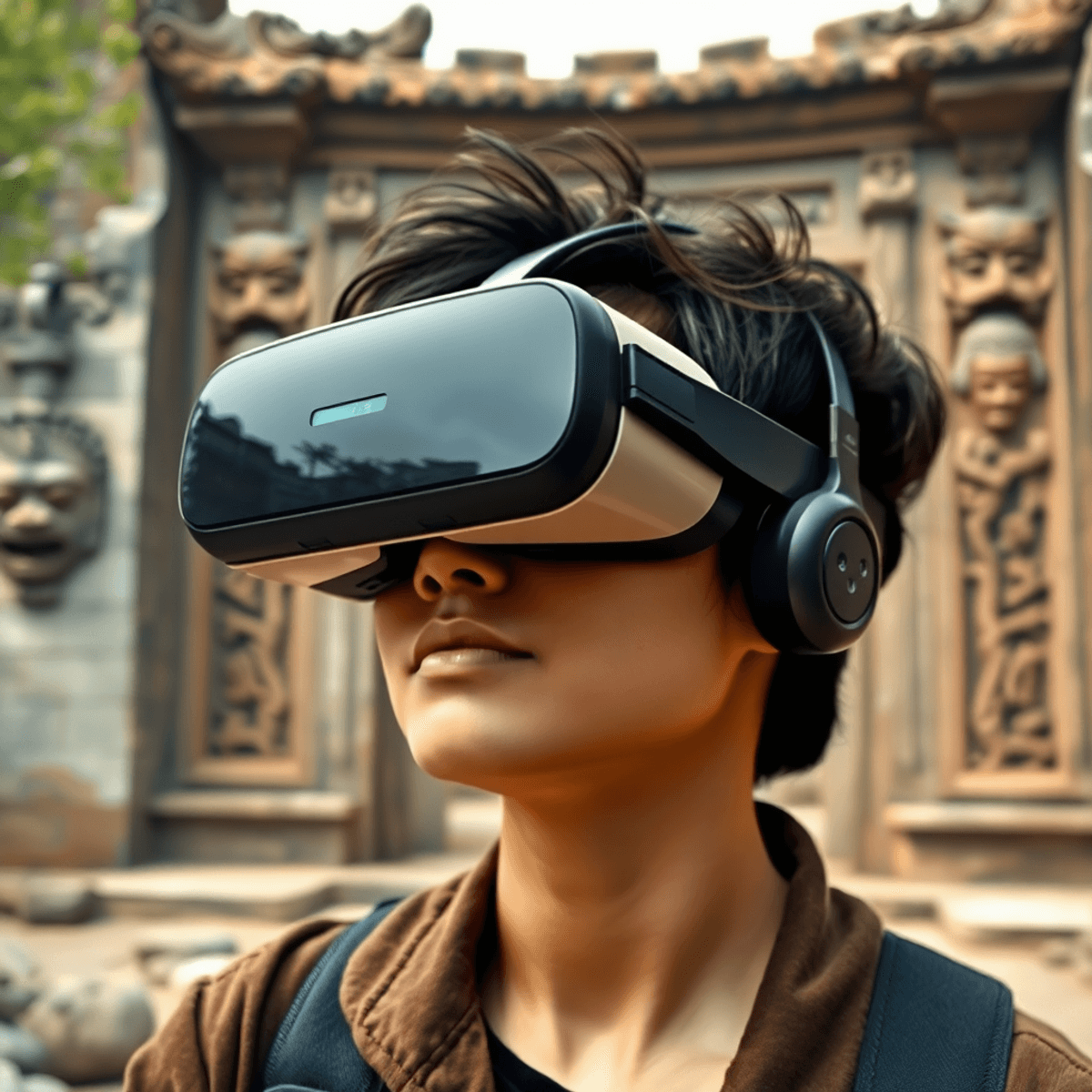
The Sanxingdui Ruins are a remarkable reminder of ancient Chinese civilization, existing for more than 3,000 years. These archaeological wonders, discovered in the 1920s, reveal a distinct culture rich in rituals and artistry. Items like bronze masks and intricate carvings suggest advanced societal structures and spiritual practices.
Using VR technology, visitors can now experience these ancient sites like never before. With the help of VR goggles, they can explore detailed recreations of places such as the Liangzhu ruins, Taosi site, and Sanxingdui Ruins. This immersive experience brings to life the daily activities, ceremonies, and cultural customs of early civilizations.
VR technology is changing the way we connect with history. It provides an immersive educational experience that traditional methods cannot offer. Users can step into a world where they can explore environments, interact with artifacts, and witness reenactments of ancient life. Understanding cultural subtleties becomes tangible through sight and sound—a leap from textbook learning to visceral experience.
The use of VR goggles in teaching about different cultures improves our understanding of ancient civilizations. This new way of presenting information not only entertains but also educates, making sure that the importance of history resonates with contemporary audiences.
Virtual reality (VR) is changing the way we learn. Instead of just reading about history, students can now experience it firsthand through VR technology. This innovative approach allows learners to immerse themselves in different cultures and time periods, gaining a deeper understanding of the world.
Immersive experiences, like those offered by VR, have several benefits for education:
Recent developments in VR technology have pushed boundaries:
With these advancements, VR doesn’t just present history; it brings it to life. The impact of VR on cultural education is profound. Institutions harness this technology to captivate audiences, making learning an unforgettable journey into the past.
The Sanxingdui Ruins are a reminder of an ancient civilization that thrived more than 3,000 years ago. Found in the 1920s, this archaeological site showcases detailed bronze artifacts, jade pieces, and masks, highlighting skilled craftsmanship and a vibrant cultural legacy.
With the help of VR goggles, guests can step into this ancient realm. The experience fully immerses them in the everyday lives, ceremonies, and cultural traditions of early societies. It’s not just a passive observation; it’s an engaging adventure.
Here are some key features that make this virtual reality experience truly special:
The link to other archaeological sites like the Taosi site adds another layer to this experience. Visitors have the opportunity to draw connections between these ancient civilizations, deepening their comprehension of historical narratives.
Wearing VR goggles, visitors can immerse themselves in detailed recreations of ancient sites like the Liangzhu ruins and Taosi site. These experiences transport users into the heart of early civilizations.
These sites complement the Sanxingdui experience, offering diverse perspectives on ancient life. Each VR journey enriches understanding through unique cultural narratives.
The China Science and Technology Museum hosts a co-sponsored exhibition that bridges ancient history with cutting-edge technology.
This exhibition aims to immerse visitors in the wonders of ancient Chinese civilizations through virtual reality experiences. It is supported by notable organizations including CCTV.com, the China Cultural Relics Exchange Center, and others, highlighting the importance of cultural education.
This collaboration demonstrates how technology can bring historical stories to life, making them accessible and interesting for all. Visitors have the opportunity to enter a world where they can not only see but also personally experience the past.
Virtual reality (VR) technology is changing how we explore and understand ancient sites. Instead of just looking at pictures or reading about them, VR lets us step inside these places and experience them as if we were really there. This hands-on approach makes learning more exciting and memorable.
Here are some important ways VR is making a difference in cultural education:
With VR, we can gain a deeper understanding of ancient civilizations. We can see how people lived, what rituals they practiced, and how their culture thrived. This firsthand experience helps us connect with the past on a more personal level.
Educational institutions are using VR as a powerful teaching tool. Instead of relying solely on textbooks or lectures, teachers can now take their students on virtual field trips to historical sites. This immersive learning experience brings history to life and makes it more relatable.
One of the great things about VR is that it can reach people who may not have access to museums or archaeological sites. Through virtual reality experiences, individuals from remote areas or those unable to travel can still explore and appreciate different cultures. This inclusivity promotes a broader understanding of our shared human heritage.
VR technology is reshaping how we view history and culture. It challenges traditional methods of preservation by offering dynamic representations instead of static displays.
Institutions that embrace VR are leading the way in this movement—combining education with innovative technology. But its impact goes beyond just visualizing the past; it encourages us to rethink how we protect and share our collective heritage.
By incorporating these tools into our educational practices, we open up new opportunities for discovering and comprehending ancient Chinese history through virtual reality experiences.
Chinese authorities have set ambitious guidelines for integrating smart technologies in urban environments. The goal: preserve cultural heritage while advancing infrastructure. Key initiatives include:
Wearing VR goggles, visitors can immerse themselves in detailed recreations of ancient sites like the Liangzhu ruins, Taosi site, and Sanxingdui Ruins. This experience brings to life the daily activities, rituals, and cultural practices of early civilizations. As cities evolve into intelligent systems, the blend of modern technology and ancient culture offers a unique perspective on urban life.
The impact of immersive experiences on learning is profound. Wearing VR goggles, visitors can immerse themselves in detailed recreations of ancient sites like the Liangzhu ruins, Taosi site, and Sanxingdui Ruins. This experience brings to life the daily activities, rituals, and cultural practices of early civilizations.
As technology advances, it opens doors for deeper understanding and exploration of history. Engaging with these ancient cultures through innovative mediums fosters appreciation and curiosity. The journey into the past continues to unfold, inviting all to participate in this revolution of discovery.


